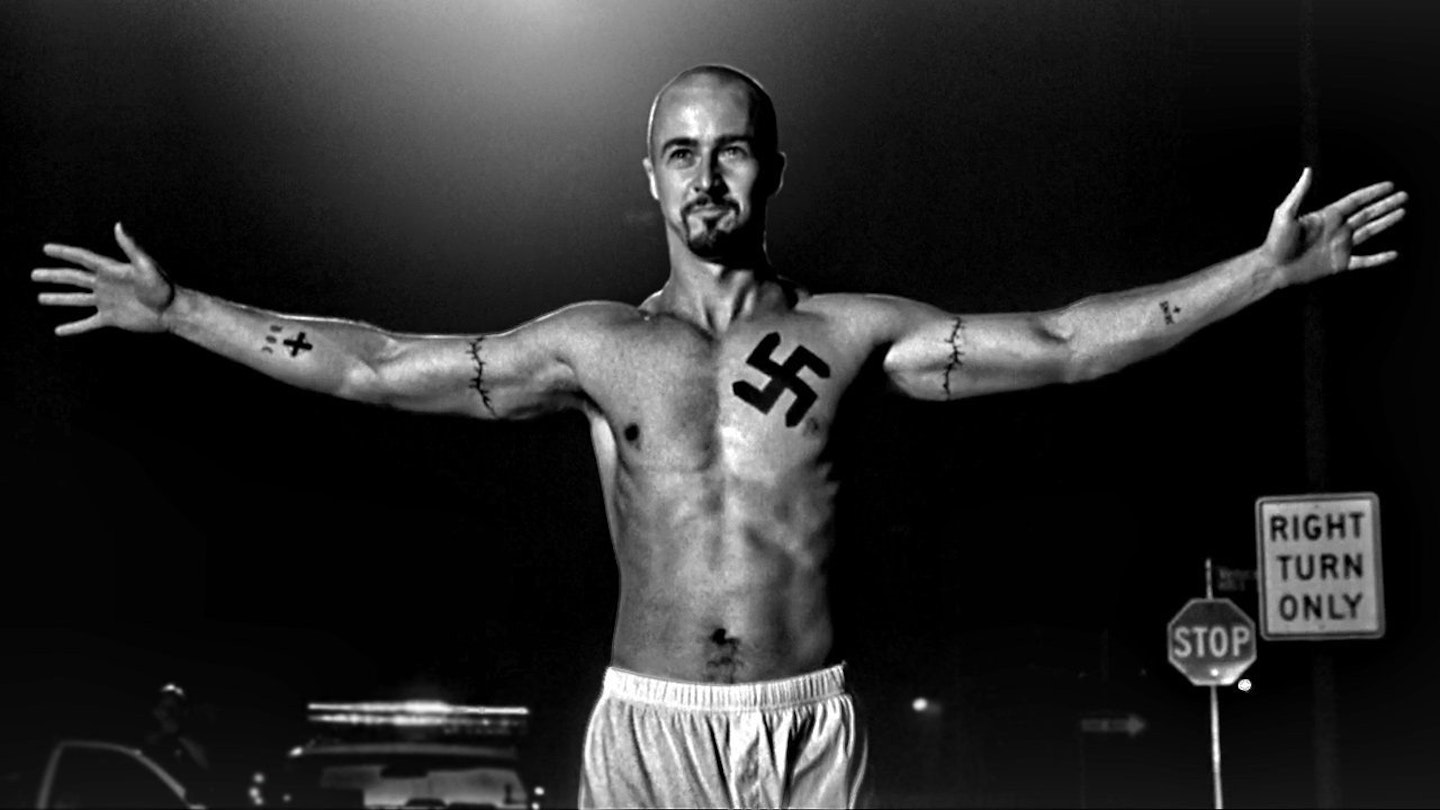And so, after all the studio palaver Brit director Tony Kaye's debut has finally hit the screen - and what emerges is that by dissociating himself totally from the studio cut finally released, Kaye may well have been guilty of taking a switchblade to his own schnozz. Because American History X is a fine film, which has at its dark centre a towering performance that establishes Edward Norton as the most promising character actor of his generation.
Told through the eyes of his admiring brother (a perfectly cast Furlong), American History X charts the rise, if that's the right word, of Derek Vinyard (Norton) a fiercely intelligent young man who, after the shooting of his father by a black man, and encouraged by sinister good ol' boy Cameron (Stacy Keach), shaves his head, has a swastika tattooed on his chest and proceeds to galvanise the local disenchanted youth into forming a racist gang before murdering two black men who were attempting to steal his car. When Derek returns on parole after three years of his sentence, his brother David (Furlong), whose doe-eyed puppyish looks bely his own gestating violent racism, is horrified to find that his brother has been reformed in jail and has not only grown back his mane but is determined to redress some of the harm he has done. Which is not a policy popular with his gang, which has gathered to welcome him back as a conquering hero.
Neo-Nazidom has a short though distinguished history on the big screen. Alan Clarke's Made In Britain and Australian director Geoffrey Wright's Romper Stomper both took an uncomfortable look inside the heads of racist thugs. Yet American History X's strength is not its subject matter but Edward Norton's ballistic performance. Despite a weak backstory (Derek's rage apparently having its genesis in childhood after a few bigoted comments uttered by his dad, while his equally implausible moral reversal comes from "meeting a nice black fella" in jail), Norton manages to deliver one of the most convincing racists ever while retaining his character's humanity. Even after he kills - and in doing so commits to celluloid one of the most sadistically shocking acts of violence in the medium's history (if, that is, all the footage of this pre-release cut survives the attentions of the BBFC) - Norton manages to preserve the shred of humanity that carries us through his redemption and prevents us from simply dismissing him as worthless scum.
Kaye's direction occasionally veers a little too close to his advertising roots; extensive use of slo-mo - particularly, for some reason, in showers that begin to resemble shampoo ads - and black-and-white lend a chic patina, which some may think is a little overcooked. And, in between set pieces, he flounders slightly, though this may be a symptom of the re-edit. Another may be the ending, in which Kaye seems to lose faith with the power of his own movie and delivers what could be seen as a cheap twist in place of a considered conclusion.
But in themselves the set pieces are astonishing. A brutal attack on a convenience store, a gruelling prison rape sequence, and a dinner party argument that erupts into violence are all edited with sustained barnstorming energy.



